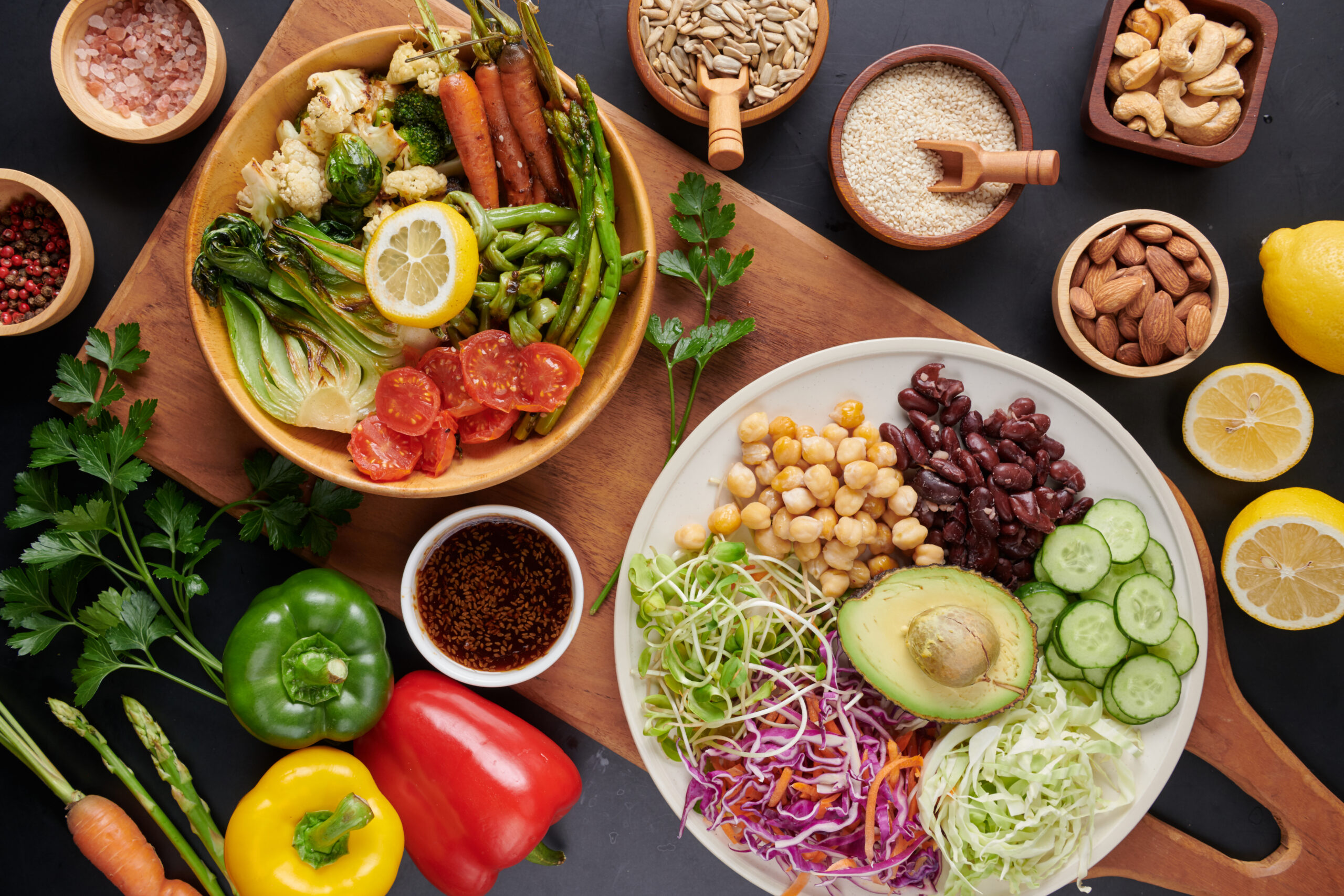
Losing weight is a goal that many people have at some point in their lives, whether it’s for health reasons, aesthetic desires, or personal milestones. However, embarking on a weight loss journey can often seem overwhelming, with so many diet plans, exercise routines, and lifestyle changes to consider.
Fortunately, you can see noticeable results in just 30 days by following a focused, balanced approach that combines proper nutrition, exercise, and mindset shifts. This 30-day plan will guide you through the necessary steps to shed pounds safely and effectively.
1. Set Realistic and Healthy Goals
Before you begin, it’s important to establish a clear, realistic goal for your weight loss journey. While it’s tempting to aim for rapid weight loss, it’s crucial to set a goal that’s achievable and sustainable. Health professionals often recommend losing about 1-2 pounds per week. Over 30 days, you could aim for a weight loss of 4-8 pounds, which is considered safe and sustainable.
Remember, every person’s body is different. Factors such as age, gender, activity level, and metabolism all play a role in how quickly you can lose weight. Setting a goal that is too ambitious can lead to disappointment and unhealthy practices. Focus instead on consistency and gradual progress, which are more likely to lead to lasting results.
2. Focus on Nutrition: A Balanced Diet
Diet plays a crucial role in any weight loss plan. What you eat is directly linked to how much weight you lose, so it’s essential to make healthy choices. While cutting out certain foods can help you lose weight, the key is to focus on balanced, nutrient-dense meals that fuel your body for the long term.

What to Eat:
– Lean Proteins: Protein helps with muscle repair, keeps you feeling full, and supports fat loss. Opt for lean sources like chicken breast, turkey, fish, tofu, beans, and legumes.
– Whole Grains: Choose complex carbohydrates like whole grains (brown rice, quinoa, oats, whole wheat) over refined grains. Whole grains are high in fiber and keep your energy levels steady.
– Fruits and Vegetables: These are rich in essential vitamins, minerals, and antioxidants. Include a variety of colorful fruits and vegetables in your diet to ensure you’re getting a range of nutrients.
– Healthy Fats: Healthy fats from sources like avocado, nuts, seeds, and olive oil are essential for hormone balance and overall health. They also promote satiety, helping you avoid overeating.
– Hydration: Water plays a critical role in weight loss. Aim to drink at least 8 glasses (64 ounces) per day. Sometimes, thirst is mistaken for hunger, leading to unnecessary snacking.
What to Avoid:
– Processed Foods: Avoid sugary snacks, fast food, and highly processed items that are packed with unhealthy fats, refined sugars, and excess salt.
– Sugary Beverages: Soda, sugary coffee drinks, and alcohol can add significant calories with little to no nutritional value.
– White Bread and Pastries: Refined carbs can spike your blood sugar and leave you feeling sluggish, leading to cravings for more food.
Sample Daily Meal Plan:
– Breakfast: Scrambled eggs with spinach and whole-grain toast, topped with avocado slices.
– Lunch: Grilled chicken salad with mixed greens, quinoa, tomatoes, cucumbers, and olive oil dressing.
– Dinner: Baked salmon with roasted sweet potatoes and steamed broccoli.
– Snack: A handful of almonds or Greek yogurt with berries.
3. Exercise: A Combination of Cardio and Strength Training
Exercise is another key factor in losing weight. Incorporating both cardiovascular exercise (to burn calories) and strength training (to build muscle) will not only help you lose fat but also improve your overall fitness.
Cardio for Fat Burning:
Cardio exercises like running, cycling, swimming, or brisk walking increase your heart rate and help you burn calories. Aim for at least 30 minutes of moderate-intensity cardio most days of the week. High-Intensity Interval Training (HIIT) is also highly effective for weight loss, as it boosts your metabolism and burns fat quickly.
Sample Cardio Workouts:
– Running: 30 minutes of steady-paced running or interval sprints.
– Cycling: 45 minutes of moderate cycling.
– HIIT: 20-30 minutes alternating between intense exercises (like jumping jacks, burpees, and mountain climbers) and short rest periods.
Strength Training for Muscle Building:
Building muscle is crucial for weight loss because muscle tissue burns more calories at rest compared to fat. Include strength training exercises at least 2-3 times a week. Focus on compound movements such as squats, deadlifts, push-ups, lunges, and rows, which engage multiple muscle groups.
Sample Strength Training Routine:
– Squats (3 sets of 12)
– Push-ups (3 sets of 10)
– Dumbbell Rows (3 sets of 12)
– Lunges (3 sets of 12 per leg)
– Plank (hold for 30-60 seconds)
You can perform these exercises as part of a full-body workout routine or break them into upper and lower body sessions.
4. Prioritize Sleep and Recovery
Sleep and recovery are often overlooked but play a vital role in weight loss. Lack of sleep can increase hunger hormones and make it harder to stick to a healthy diet. It can also impair your body’s ability to repair muscle tissue and recover from exercise.
Aim for 7-9 hours of quality sleep per night. Establish a bedtime routine, avoid caffeine late in the day, and limit screen time before bed to help improve your sleep quality.
In addition to sleep, incorporate rest days into your exercise routine. This allows your body to recover and rebuild muscle, which ultimately helps with fat loss and fitness gains.
5. Mindset: Staying Consistent and Motivated
Consistency is the key to long-term success. Weight loss doesn’t happen overnight, and there will be times when progress slows down or you face challenges. To stay motivated, try the following strategies:
– Track Your Progress: Keep track of your food intake, exercise routine, and any changes in your body measurements or weight. This can help you stay accountable and motivated to keep going.
– Find Support: Consider joining a fitness group, talking to a friend, or working with a professional like a dietitian or personal trainer. Having a support system can make the journey easier.
– Focus on Non-Scale Victories: The number on the scale isn’t the only measure of progress. Celebrate improvements in energy levels, sleep quality, fitness, and how your clothes fit.
6. Track Your Results and Adjust Your Plan
At the end of 30 days, assess your progress. How do you feel physically and mentally? Are you losing weight? Have your habits improved? If you’re not seeing the results you expected, don’t be discouraged. You may need to adjust your diet, increase your workout intensity, or make other small changes to continue progressing.
Conclusion: Sustainable Weight Loss in 30 Days
Losing weight in 30 days is absolutely achievable, but it requires dedication and consistency. By focusing on a balanced diet, incorporating regular exercise, prioritizing recovery, and maintaining a positive mindset, you can see significant changes in your body and health.
Remember, weight loss is not just about the number on the scale but about adopting healthier habits that you can sustain in the long term. The 30-day commitment is just the beginning. The habits you build during this time can set you up for continued success beyond these 30 days, helping you maintain a healthy weight and live a more energetic, balanced life.
Always consult with a healthcare provider or a nutrition expert before starting a new diet or fitness plan, especially if you have any underlying medical conditions.